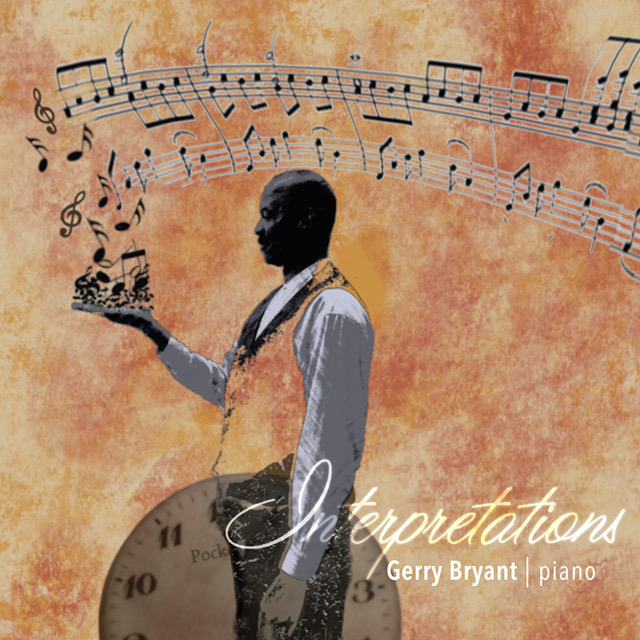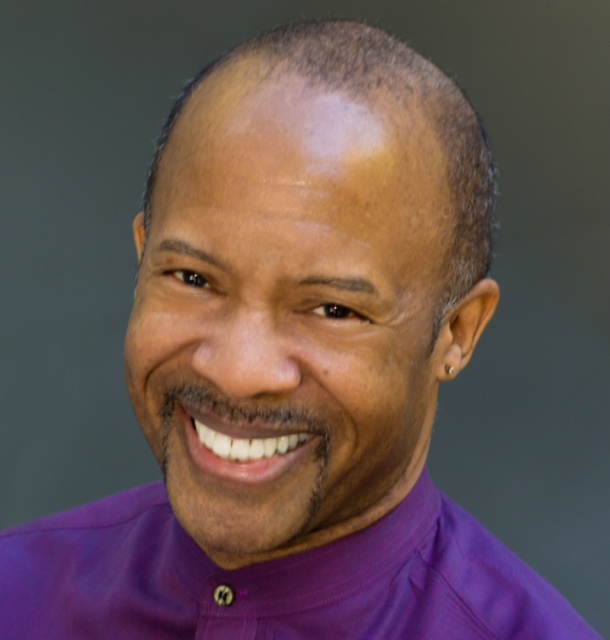Pianist/composer Gerry Bryant: Interpretations - watch the interview, read my review
Buy the CD
Visit Gerry Bryant’s web site
Download a PDF of the review
Listen to Gerry Bryant’s interpretation of Take Five
Watch my interview with Gerry Bryant about four more of his CDs: Musical Moments, Rhapsodic, The Romance Continues and Chasing The Clouds Away
Los Angeles-based pianist, composer and attorney Gerry Bryant embodies what American composer Gunther Schuller dubbed in 1957 the Third Stream. Schuller was convinced the melding of classical and jazz idioms into a hybrid third genre was inevitable. Bryant’s life as a professional musician dovetails nicely with his several activities as an attorney and board member of California Lawyers for the Arts, a legal rights advocacy network that helps artists navigate the intricacies of contracts and intellectual property. Bryant has not only hybridized his tastes and talents in his music-making, but also his dual careers as musician and lawyer.
Bryant’s 2013 Interpretations CD is infused with the pianist’s life-long passion for classical music, which was honed and disciplined during his studies at Harvard. His penchant for jazz improvisation found viable expression at gigs he played off campus during his Harvard years. This conflation of classical training and jazz intuition has enabled him to indulge his keen understanding of counterpoint, structure, harmony and the arc of musical narrative.
Hymn in G is the first of three original Bryant pieces on the Interpretations CD and presents itself in a more or less straightforward classical manner, mildly tweaked with jazz chords and discreet improvisations. Mark Cargill joins Bryant for the first of only two occasions on the otherwise solo piano CD to play the composer’s fetching hymn tune on violin and viola over Bryant’s gently rolling chordal support.
Bryant’s deliberate decision to emphasize the funereal pulse in Chopin’s E Minor Prelude No. 4, Op. 28 sets the emotional stage for an imaginative segue to Paul Desmond’s version of Dave Brubeck’s Take Five. Beginning softly with the same E Minor chord that concludes the Bach, Bryant keeps the same tempo for Take Five. The listener hears Brubeck’s otherwise lilting 5/4 tune at a more searching and deliberate pace – the result is rewarding. In the last few seconds of Bryant’s Take Five he allows for an up-tempo fragment of the famous Brubeck tune as if to break the spell he has created.
Track 4 is another delightful Bryant composition, Savannah & Kealan. Spirited and playful, with tricky but fun chordal design that surprises delightfully, the piece promenades a collection of jazz stylings laced with easy-going improvisations. An Erik Satie-styled intro to track 5, an innovative take on John Denver’s Sunshine on My Mind somehow makes perfect sense in Bryant’s interpretation, sustaining the casual, walking pace of the disc. Mellow, like the tune’s author, lilting briefly in cut-time, then back to the somnambulism of Gymnopédies, Bryant’s interpretive confidence makes for a solid improvisatory fabric that glows with sunshine and sensibility.
Track 6 is the first movement Rondo from master Bryant’s earliest compositional portfolio circa age 15. Charmingly naïve but seriously intentioned, the piece is just over a minute of creative earnestness in the style of Haydn. One imagines the puzzlement of Gerry’s teenage buds in Cleveland’s inner city ‘hood.
Carrying the listener out to sea – it’s all about tonality – Bryant’s take on Christopher Cross’ Sailing includes the first and only broadly dramatic pianistic outburst on the disc during the intro, but soon settles back into the walking pace that characterizes the entire album. Bryant’s intelligently jazz-morphed takes on Alfredo Catalani’s aria In Sogno and Chopin’s Etude No. 7 in C-Sharp Minor, Op. 25 set the stage for a marvelous interpretive journey through a medley of movie scores on track 10 including The Music of the Night, Phantom of the Opera, and an appropriately funky riff on Think of Me. Stitched together beautifully, Bryant’s improvisations are lovely and mood-changing. Interesting use of registration and voice leading successfully connect the musical dots between the three films.
Discreetly Jazz-influenced interpretations of the third movement from Bach’s Capriccio on the Departure of a Beloved Brother BWV 992 and Chopin’s Nocturne No. 1 in E Minor, Op. 72 bookend Bryant’s beautifully nuanced take on Henri Mancini’s song It’s Easy to Say from the film 10. A thoughtfully elegant improv on Edith Piaf’s La Vie en Rose segues into the last track on the disc, violinist Mark Cargill joining Bryant again for a completely “straight” performance of the timeless Méditation from Massenet’s opera Thaïs.
Daniel Kepl | Performing Arts Review


Daniel Kepl chast with pianist, composer, and arts attorney Gerry Bryant


